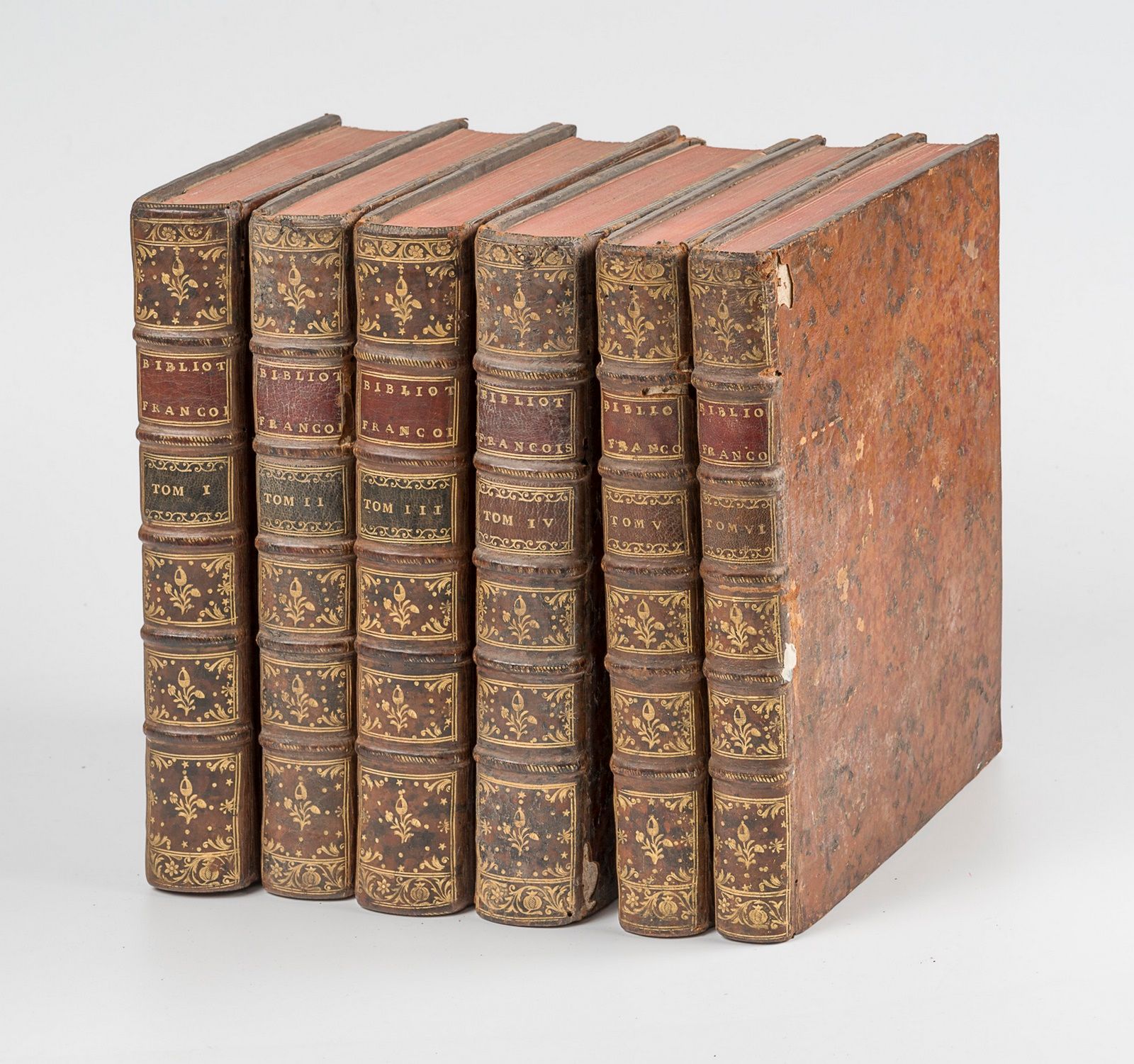Description
LIBRARIES. - LA CROIX DU MAINE and DU VERDIER. The French Libraries. Paris, Saillant et Nyon, Michel Lambert, 1772-1773. 6 vol. in-4, marbled calf, spine with ornamented nerves (Rel. of the time). New edition, enlarged by M. Rigoley de Juvigny, of these two bibliographical works first published in the 16th century. Signature of the time : Madame Baudry. Bindings rubbed with small lacks, epidermures; small differences between the bindings.
1
LIBRARIES. - LA CROIX DU MAINE and DU VERDIER. The French Libraries. Paris, Saillant et Nyon, Michel Lambert, 1772-1773. 6 vol. in-4, marbled calf, spine with ornamented nerves (Rel. of the time). New edition, enlarged by M. Rigoley de Juvigny, of these two bibliographical works first published in the 16th century. Signature of the time : Madame Baudry. Bindings rubbed with small lacks, epidermures; small differences between the bindings.
